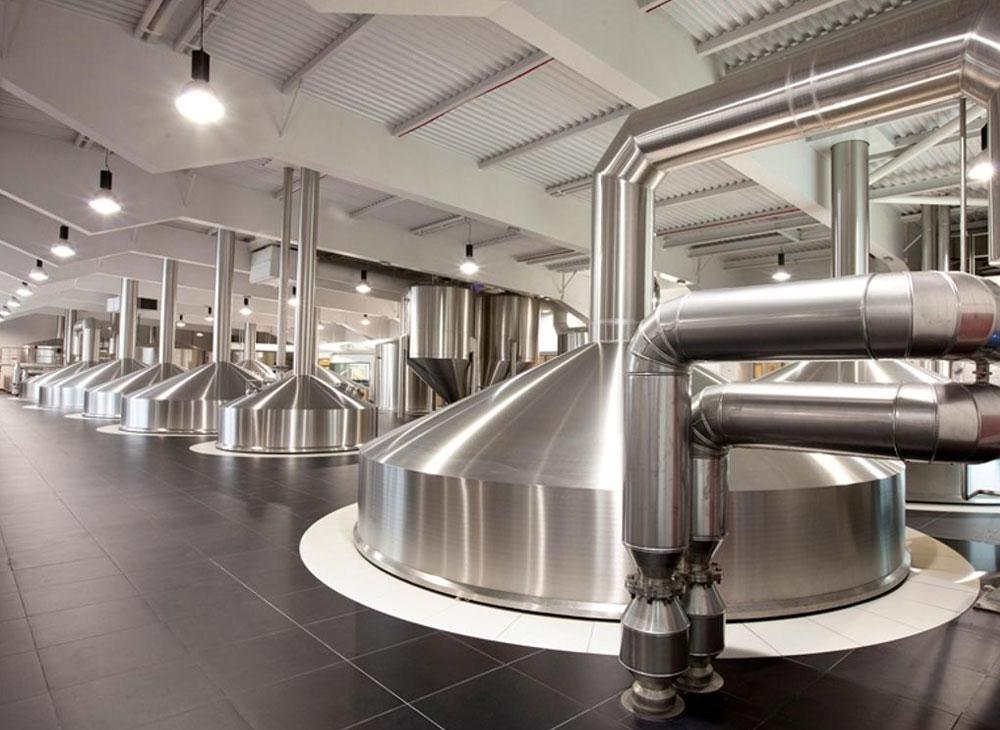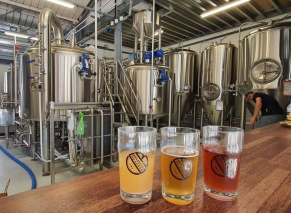The Tank-top Plates Of the fermenting tank
Heavy, flat plates are usually bolted to a collar and counter-flange on the top head.
Either a flat gasket or machined O-ring groove is used for sealing. Tank-top plates are sometimes used in place of manways.
.jpg)
The underlying philosophy is that cleaning and sanitation are improved by eliminating the hard-to-clean lower manway that is submerged in the beer. The tank top contains all the required fittings and minimizes penetrations through the actual tank head. It typically contains a cleaning machine, pressure-and vacuum-relief valves, vent connection, sight glass, and inspection light.
Some designs also incorporate a system for verification of cleaning machine rotation, since visual inspection is somewhat more difficult than with side manway designs. Sometimes a pressure transducer is furnished to monitor tank pressure and, when coupled with additional transducers, can also be used to track volume and density.
These designs usually incorporate pressure and vacuum devices large enough to allow closed cleaning regimes, although larger tanks are usually cleaned at ambient temperatures or slightly above for safety.Periodic visual inspections should be scheduled that include the complete removal of the tank top, since the viewing windows in the tank top do not allow for an adequate cleaning assessment.
Tanks without lower manways are difficult and potentially dangerous to enter. In addition to other confined -space requirements, proper training and the need for safety harness and evacuation winches are required.In very large or tall tanks, service personnel have resorted to inflating rubber boats and filling or emptying the tank with water to obtain access.
Tank-top plates incorporating sanitary agitators, aeration, and cleaning are also available to provide relatively complete and effective designs for yeast propagators.
Thanks for reading.


.jpg)





Get A Quote